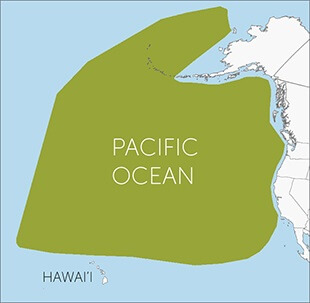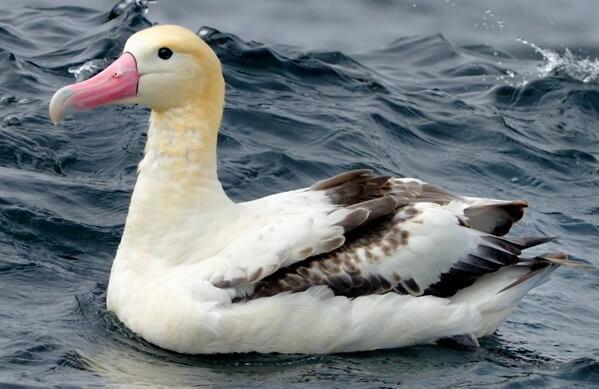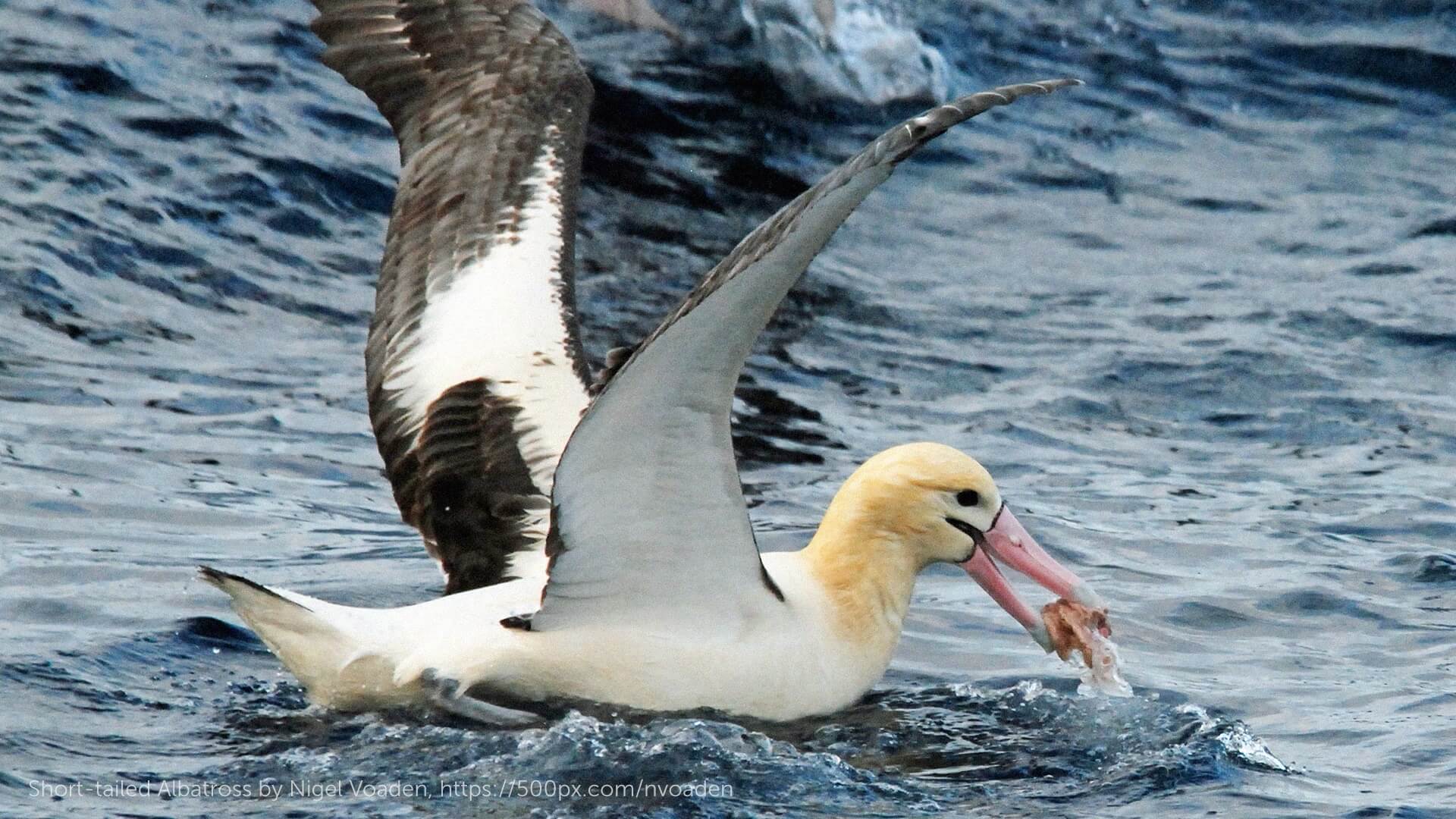 Short-tailed Albatross nests primarily on a few islands off the coast of Japan, where it was once known as Ahodori (fool-bird). The nickname derived from the species' naiveté regarding people, which almost led to the extinction of a bird that once numbered in the millions.
Short-tailed Albatross nests primarily on a few islands off the coast of Japan, where it was once known as Ahodori (fool-bird). The nickname derived from the species' naiveté regarding people, which almost led to the extinction of a bird that once numbered in the millions.
Plume hunters of the late 19th and early 20th centuries had so reduced the population that by 1949, it was considered extinct. A fortunate rediscovery in 1951 found about ten pairs; today, conservation measures have increased the population to a few thousand.
Short-tailed Albatross are no longer hunted for their plumage, but numerous threats to the species remain. Among these threats are incidental bycatch in longline fisheries; habitat loss on nesting islands, particularly from rising seas caused by climate change; invasive species on nesting islands; and plastic debris, which the birds mistake for food.
Big Pink-billed Bird
Largest and rarest of the three albatross species found in the Northern Hemisphere, the Short-tailed Albatross is also the most colorful. The bird's white body, yellow-gold head, and big, bright-pink bill distinguish it from both Laysan and Black-footed Albatrosses.
Juvenile Short-tails are dark and make up the majority of sightings in U.S. waters. These young birds can be distinguished from Black-footed Albatross by the Short-tail's overall larger size and pink bill color.
A Life Spent at Sea
Short-tailed Albatross is a bird of the open ocean, riding the winds over the north Pacific along the coasts of eastern Russia and Asia, the Hawaiian Islands, and the Pacific Coast of North America. Like its close relative, the Waved Albatross, it comes to land only to nest.
Mainly a nocturnal feeder, Short-tailed Albatross alights on the ocean's surface to dine on squid, flying fish eggs, and shrimp. It often follows fishing boats to scavenge offal.
Sign up for ABC's eNews to learn how you can help protect birds
Saving Short-tails
Because of its small population, Short-tailed Albatross is listed under the U.S. Endangered Species Act and considered Vulnerable to extinction by the IUCN Red List. A number of conservation measures have slowly increased the number of birds from its historical low nearly 75 years ago. One of these is conservation of habitat at the species' main breeding site, Torishima (literally, “bird-island” in Japanese).

Female Short-tailed Albatross with chick by USFWS Pacific Region
However, since Torishima is a volcanic island, one eruption at the wrong time could decimate the species. Researchers from the U.S. Fish and Wildlife Service and Japan's Yamashina Institute for Ornithology established an "insurance" population of this albatross at another, less-risky locale, with chicks translocated to Mukojima Island some 200 miles south. In a heartening conservation success, the hand-reared birds began to return to nest on Mukojima after maturing.
(ABC has been involved in similar efforts in Hawai'i to establish additional breeding colonies for rare seabirds, including Hawaiian Petrel, Newell's Shearwater, and Laysan Albatross.)
Programs in the United States have also helped the Short-tailed Albatross population to recover. For example, regulations now require larger fishing vessels to use bird-scaring streamer lines to prevent birds from becoming hooked.
ABC's Seabirds Program works to conserve Short-tailed Albatross and other seabirds through a combination of direct action, outreach, and policy work. We support legislation to ratify the Agreement on the Conservation of Albatrosses and Petrels (ACAP), and our interactive web-based tool helps fisheries avoid accidentally catching seabirds.
Donate to support ABC's conservation mission!




















































